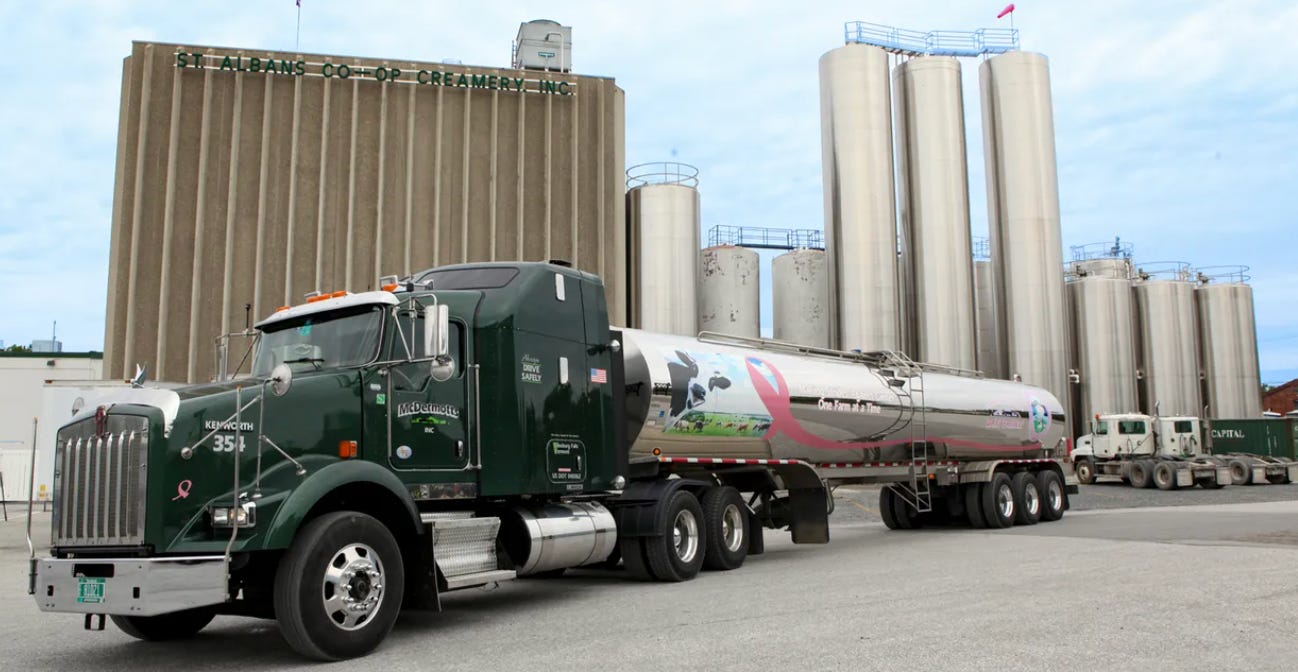St. Albans Creamery Owners Are No Strangers to Environmental Lawsuits - Their Settlement With Vermont Won't Reverse the Damage
For Vermonters, the episode leaves a pressing question: Can isolated settlements truly protect the state’s most vital natural resource, or is an overhaul of environmental enforcement needed?
For generations, Vermonters have viewed Lake Champlain as the crown jewel of the state’s landscape. But beneath the surface of its celebrated waters, a story of pollution and questionable oversight is unfolding. The recent settlement between the State of Vermont and the St. Albans Creamery may seem like a victory for environmental law, but a closer look reveals it as a single data point in a much larger, more troubling trend.
The agreement, announced by Attorney General Charity Clark’s office, requires the creamery to pay a $210,500 penalty for a series of environmental violations. However, the details of the case, viewed against a backdrop of federal criticism and corporate history, suggest that such settlements may be doing little to address the systemic pressures on Vermont's waterways.
A Pattern of Pollution
According to the state’s legal filings, the violations at the St. Albans plant, which occurred repeatedly between 2021 and 2024, were both persistent and varied. The creamery, now a subsidiary of the national giant Dairy Farmers of America (DFA), repeatedly discharged raw, untreated industrial wastewater directly into the municipal system. This waste, laden with milk and cream, carried levels of phosphorus—a primary driver of toxic algae blooms in Lake Champlain—that far exceeded the limits of its permit.
The settlement documents detail other significant breaches. The creamery surpassed legal limits on wastewater flow, sending surges of effluent that overwhelmed the St. Albans public treatment facility. The discharge also violated mandated pH levels, meaning it was at times too acidic or alkaline, a condition that can disrupt treatment processes and harm aquatic life. Furthermore, the state alleges that the creamery’s on-site pretreatment system was not adequately staffed, leading to a breakdown in the first line of defense against pollution.
Not Your Parents’ Coop
This facility is no longer the local cooperative it once was. Its parent company, Dairy Farmers of America, is a Fortune 500 behemoth with annual revenues in the tens of billions of dollars. This context is critical, as DFA’s environmental record extends beyond Vermont’s borders. According to news reports on a 2022 lawsuit in Missouri, a DFA facility there was accused of knowingly discharging wastewater contaminated with animal blood, fat, and oil into the local sewer system for years, causing significant damage.
In a statement regarding the Vermont settlement, DFA noted it has made “significant investments” to comply with its permit. Still, for three years, a local Vermont municipality’s infrastructure was forced to bear the strain of violations originating from a plant owned by one of the nation's largest corporations.
A Crisis in Regulation
The St. Albans case did not happen in a vacuum. It lands squarely in a period of intense federal scrutiny over Vermont’s enforcement of the Clean Water Act.
In a sharply critical 2023 review, the U.S. Environmental Protection Agency (EPA) declared Vermont’s program for regulating its largest industrial farms to be deficient. According to the EPA’s official findings, the state’s oversight of Large Concentrated Animal Feeding Operations (CAFOs) failed to meet federal standards. The agency pointed to a pattern of the Vermont Agency of Natural Resources (ANR) approving inadequate nutrient management plans and, crucially, failing to take “timely and appropriate” enforcement action to compel compliance from polluters.
This federal criticism was crystallized in the widely reported case of the Vorsteveld Farm in Addison County. News coverage and state records revealed that the farm had violated its permit over 100 times, yet, as critics noted, was still granted a state permit to expand its operations. For many environmental advocates, such cases demonstrate a regulatory culture that is too permissive, allowing pollution to continue for years before meaningful consequences are applied.
The Impact on the Lake
The ultimate price of these industrial violations and regulatory gaps is paid by Lake Champlain. Phosphorus acts as a super-fertilizer for cyanobacteria, or blue-green algae. The result is the thick, foul-smelling, and potentially toxic blooms that now force the closure of beaches in St. Albans Bay and Missisquoi Bay nearly every summer, turning the water into a dangerous green sludge.
The 2024 State of the Lake report, published by the Lake Champlain Basin Program, confirms that phosphorus concentrations in these northern sections of the lake remain stubbornly above Vermont’s established water quality targets. While the report notes some long-term progress, the bays remain ecologically stressed.
Compounding the problem is a critical lack of information. According to the U.S. Geological Survey, the official monitoring gage on Stevens Brook—the direct recipient of the creamery’s illegal discharges—is not currently in operation. This data gap means that during the very period of the violations, the state was effectively flying blind, unable to fully measure the impact of the pollution on a key local tributary.
While the $210,500 penalty against the St. Albans Creamery has been collected, it represents a fractional cost of doing business for a corporation the size of DFA. For Vermonters, the episode leaves a pressing question: Can a strategy of isolated settlements truly protect the state’s most vital natural resource, or is a fundamental overhaul of environmental enforcement needed to turn the tide?


